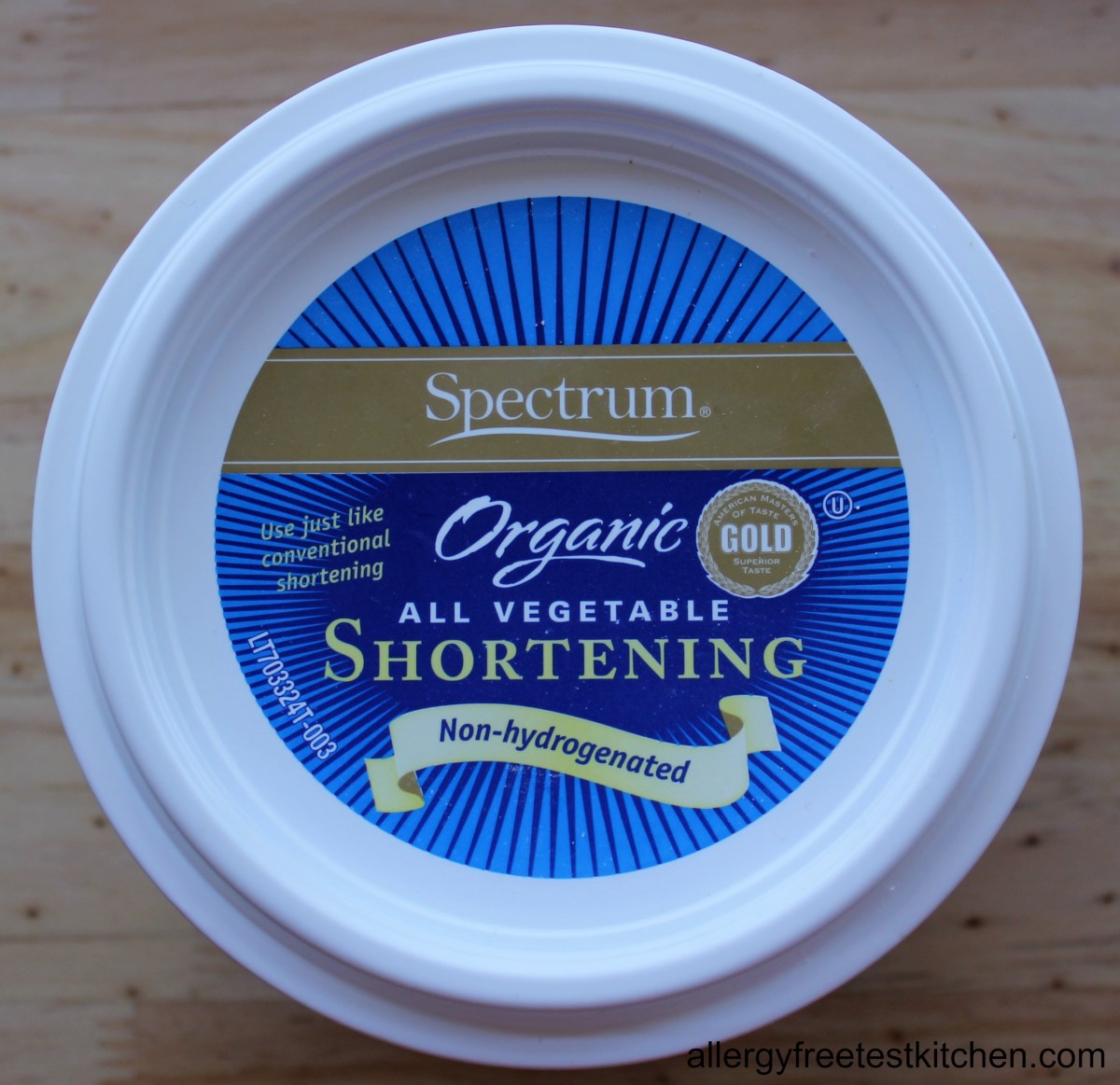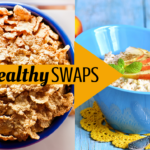Embark on a culinary adventure, ditching soy without sacrificing deliciousness! Imagine the rich aroma of almond flour cakes, the satisfying chew of coconut flour cookies, or the creamy texture of a cashew yogurt cheesecake – all free from soy. This guide unveils a treasure trove of ingenious substitutes, transforming your baking repertoire into a soy-free haven of flavor and texture. We’ll explore a range of alternatives for flours, lecithin, milks, and yogurts, empowering you to confidently recreate your favorite recipes and discover exciting new ones.
From understanding the nuances of different flour types and their impact on moisture absorption to mastering the art of replacing soy lecithin and dairy alternatives, this comprehensive guide provides step-by-step instructions, insightful comparisons, and expert tips to ensure your soy-free baking journey is a resounding success. Prepare to unlock a world of possibilities, where creativity flourishes and delicious, soy-free treats abound.
Soy-Free Flour Alternatives
Embarking on a soy-free baking journey opens a world of delicious possibilities, but choosing the right flour substitute requires understanding their unique properties. Each flour offers a distinct texture, moisture absorption rate, and nutritional profile, influencing the final outcome of your baked goods. Let’s explore some popular options and their applications.
Almond Flour Properties and Applications
Almond flour, made from blanched and ground almonds, imparts a subtly sweet, nutty flavor and a naturally dense, moist crumb. Its high fat content contributes to a tender texture, making it ideal for cakes, muffins, and cookies. However, its low gluten content means it won’t rise as much as wheat flour, so recipes often require additional leavening agents like baking powder or baking soda. Almond flour’s delicate flavor pairs beautifully with citrus fruits, spices like cinnamon and cardamom, and chocolate. A classic example of its success is a delicate almond cake, where its nutty richness shines. Recipes often call for additional eggs to bind the flour and provide moisture.
Coconut Flour Properties and Applications
Coconut flour, derived from dried coconut meat, is exceptionally absorbent. Its high fiber content creates a naturally dense and slightly crumbly texture. It requires significantly more liquid than other flours, often a ratio of 1:4 or even higher, depending on the recipe. Coconut flour’s distinctive flavor adds a subtle sweetness and a tropical touch, making it a perfect choice for gluten-free quick breads, pancakes, and muffins. The strong coconut flavor is best suited to recipes where it complements the overall taste profile, such as coconut macaroons or muffins with tropical fruits. Due to its high absorbency, careful attention to liquid measurement is crucial to avoid a dry, crumbly outcome.
Oat Flour Properties and Applications
Oat flour, created by grinding rolled oats into a fine powder, offers a mild, slightly sweet flavor and a hearty texture. It’s naturally gluten-free (unless contaminated during processing), and its moderate moisture absorption makes it relatively easy to work with. Oat flour lends itself well to cookies, muffins, and even pancakes, providing a wholesome and slightly chewy texture. Its mild flavor makes it a versatile choice for both sweet and savory applications. Oat flour’s ability to bind well makes it a great option for gluten-free baking projects that require structural integrity.
Rice Flour Properties and Applications
Rice flour, produced from finely ground rice grains, is another popular gluten-free option. Its neutral flavor makes it a blank canvas for various recipes, and its fine texture results in a delicate, slightly crumbly baked good. However, rice flour’s low protein content means it can produce a somewhat dry and less structurally sound product compared to other flours. It’s often used in combination with other gluten-free flours to improve texture and rise. Rice flour excels in recipes where a light and delicate texture is desired, such as delicate cakes or pie crusts. Its neutral flavor allows other ingredients to shine.
Nutritional Comparison of Soy-Free Flours
The nutritional content varies significantly across these flours. Understanding these differences can inform your dietary choices.
| Flour Type | Protein (g/100g) | Fiber (g/100g) | Carbohydrates (g/100g) |
|---|---|---|---|
| Almond Flour | 12-15 | 8-12 | 20-25 |
| Coconut Flour | 6-8 | 35-40 | 60-70 |
| Oat Flour | 10-15 | 10-15 | 65-75 |
| Rice Flour | 7-9 | 1-3 | 75-85 |
Moisture Absorption and Baking Adjustments
Each flour’s unique moisture absorption capacity significantly impacts baking results. Almond flour, with its high fat content, requires less liquid than oat or coconut flour. Coconut flour, being incredibly absorbent, necessitates a much higher liquid-to-flour ratio. Oat flour falls somewhere in between, requiring moderate adjustments based on the recipe. Rice flour, similar to almond flour, often requires less liquid than oat flour, but more than almond flour. Careful attention to these differences is crucial for achieving the desired texture and preventing overly dry or overly moist baked goods. Always refer to specific recipes for accurate measurements and adjustments.
Adapting Existing Recipes
Converting recipes that rely on soy ingredients into soy-free alternatives requires careful consideration and substitution. The goal is to maintain the original texture, flavor, and overall structure of the baked good while eliminating any soy-based components. This process often involves substituting ingredients based on their functional roles within the recipe.
A systematic approach, focusing on the role of soy in the original recipe, is crucial for successful adaptation. Soy often acts as a binder, emulsifier, or flavor enhancer. Understanding these roles allows for targeted substitutions with comparable non-soy alternatives.
Soy-Free Recipe Conversion Guide
This step-by-step guide Artikels the process of converting a soy-containing recipe into a soy-free version. It highlights common soy ingredients and their suitable replacements.
- Identify Soy Ingredients: Carefully examine the original recipe to pinpoint all soy-based ingredients. Common culprits include soy sauce, soy milk, soy flour, soy lecithin, and tofu.
- Determine the Function of Soy: Understand the role each soy ingredient plays in the recipe. Is it a binder (like soy flour), an emulsifier (like soy lecithin), a flavoring agent (like soy sauce), or a moisture provider (like soy milk)?
- Select Appropriate Substitutes: Choose suitable replacements based on the identified function. For example:
- Soy Flour: Substitute with an equal amount of almond flour, oat flour, or a blend of different gluten-free flours.
- Soy Milk: Replace with almond milk, oat milk, coconut milk, or rice milk. The type of milk you choose might affect the final taste and texture; experimentation might be needed.
- Soy Sauce: Use tamari (gluten-free soy sauce), coconut aminos, or a combination of liquid aminos and a small amount of salt for a similar savory flavor.
- Soy Lecithin: Replace with sunflower lecithin or a similar plant-based lecithin. In some cases, it may be possible to omit it altogether.
- Adjust Quantities as Needed: Some substitutes might absorb more or less liquid than their soy counterparts. You may need to adjust the amount of liquid in the recipe to achieve the desired consistency. Start with a small adjustment and add more as needed.
- Test and Refine: Baking is a science, and substitutions can sometimes require adjustments. It is recommended to make a small batch of the soy-free version first to assess the texture and flavor before making a larger quantity.
Soy-Free Brownies
This recipe adapts a standard brownie recipe to eliminate all soy-based ingredients. It uses readily available substitutes to achieve a rich, fudgy texture and delicious flavor.
Ingredients:
- 1 cup (2 sticks) unsalted butter, melted
- 2 cups granulated sugar
- 4 large eggs
- 1 teaspoon vanilla extract
- 1 cup all-purpose flour (or gluten-free blend)
- ½ cup unsweetened cocoa powder
- ½ teaspoon baking powder
- ¼ teaspoon salt
- Optional: Chocolate chips (ensure they are soy-free)
Instructions:
- Preheat oven to 350°F (175°C). Grease and flour an 8×8 inch baking pan.
- In a large bowl, combine melted butter and sugar. Beat until well combined.
- Add eggs one at a time, mixing well after each addition. Stir in vanilla extract.
- In a separate bowl, whisk together flour, cocoa powder, baking powder, and salt.
- Gradually add the dry ingredients to the wet ingredients, mixing until just combined. Do not overmix.
- Stir in chocolate chips, if desired.
- Pour batter into the prepared pan and bake for 25-30 minutes, or until a toothpick inserted into the center comes out with moist crumbs.
- Let cool completely before cutting and serving.
Challenges and Solutions in Recipe Adaptation
Adapting recipes can present several challenges. Understanding these challenges and their solutions is key to successful soy-free baking.
- Texture Changes: Different flours absorb liquids differently. Adjusting liquid amounts is crucial to maintain the desired texture. For example, almond flour tends to absorb more liquid than all-purpose flour.
- Flavor Alterations: Soy ingredients often contribute specific flavors. Substitutes may impart different tastes, requiring adjustments to other ingredients (like adding more vanilla or spices) to balance the overall flavor profile.
- Binding Issues: Soy flour acts as a binder. Replacing it may require using additional binding agents like flaxseed meal or applesauce to achieve the same level of cohesion in the baked good.
- Emulsification Problems: Soy lecithin is an emulsifier. Its absence might lead to separation of ingredients. Using other emulsifiers or thoroughly mixing ingredients can mitigate this.
Soy-Free Baking Tips and Tricks

Successfully navigating the world of soy-free baking requires understanding the unique properties of soy and finding effective replacements. This section offers practical tips and troubleshooting advice to ensure your soy-free creations are as delicious and structurally sound as their soy-containing counterparts. Mastering these techniques will elevate your soy-free baking to a new level.
Essential Soy-Free Baking Techniques
To achieve consistently successful results in soy-free baking, several key techniques are crucial. These techniques address common challenges and maximize the potential of your chosen substitutes.
- Careful Measurement: Precise measurements are paramount in baking, especially when omitting soy. Soy products often contribute to moisture and binding; their absence necessitates meticulous attention to the quantity of other ingredients. Using a kitchen scale for weighing ingredients, rather than relying solely on volume measurements, will yield more consistent results.
- Understanding Liquid Dynamics: Soy products contribute to the moisture content of baked goods. Their absence might result in drier products. Adjusting liquid levels, perhaps by adding a little extra milk or applesauce, can compensate for this. Experimentation and careful observation of the dough or batter’s consistency are key to finding the right balance.
- Proper Mixing Techniques: Overmixing can lead to tough baked goods, regardless of the ingredients. With soy-free baking, gentle mixing is even more important, as many substitutes are more delicate. Mix until just combined, avoiding overdevelopment of the gluten in flour-based recipes.
- Temperature Control: Maintaining consistent oven temperatures is vital. Fluctuations can affect the rise and texture of soy-free baked goods, which may be more sensitive to temperature changes than those containing soy. Using an oven thermometer to ensure accuracy is highly recommended.
- Ingredient Selection: Choosing high-quality ingredients is crucial. The quality of your flour, eggs, and other components directly impacts the final product. Using fresh, high-quality ingredients enhances flavor and texture, compensating for the absence of soy’s inherent properties.
Visual Comparison: Soy-Based vs. Soy-Free Bread
Imagine two loaves of bread side-by-side. The soy-based loaf possesses a deep golden-brown crust with a slightly glossy sheen. Its crumb is soft, even, and slightly moist, with a uniform texture throughout. The air pockets are small and evenly distributed, creating a fine, delicate structure. In contrast, the soy-free loaf might have a paler crust, perhaps slightly less glossy. Its crumb might be slightly more coarse, with larger air pockets, possibly resulting in a less uniform texture. The soy-free bread might also appear slightly drier, although this depends heavily on the recipe and substitutes used. The overall appearance might be less uniform, with variations in color and texture more pronounced.
Troubleshooting Common Soy-Free Baking Problems
Several issues can arise during soy-free baking. Addressing them proactively ensures successful results.
- Dry Texture: A common problem stems from the loss of moisture contributed by soy. Adding extra liquid (milk, applesauce, or even a little oil) gradually, while carefully monitoring the dough’s consistency, is the solution. Start with small increments to avoid making the dough too wet.
- Lack of Rise: Insufficient rise can be due to several factors: improper mixing, insufficient leavening agents, or low oven temperature. Double-check the recipe for leavening amounts, ensure thorough mixing without overmixing, and verify the oven temperature using a thermometer. If using yeast, confirm its freshness and proper activation.
Baking without soy opens a world of culinary creativity, revealing a spectrum of delicious alternatives that deliver surprising results. From the delicate crumb of almond flour to the subtle sweetness of oat milk, each soy-free substitute adds its own unique character to your baking. By understanding the properties of these ingredients and adapting recipes with confidence, you can create delectable treats that are both flavorful and free from soy. So, embrace the challenge, experiment with these techniques, and savor the joy of successful soy-free baking!
Clarifying Questions
Can I use all-purpose flour as a direct soy-free substitute?
Generally, yes, if the recipe doesn’t rely on soy’s unique properties. However, the results might vary slightly in texture and moisture content compared to recipes using soy flour.
What are the potential drawbacks of using soy-free alternatives?
Some alternatives may be more expensive than soy products. Others might alter the final product’s texture or taste slightly, requiring adjustments to recipes. Careful reading and experimentation are key.
How do I store soy-free baked goods to maintain freshness?
Proper storage varies depending on the baked good. Generally, airtight containers at room temperature are suitable for shorter-term storage. Freezing is ideal for longer preservation.
Are all soy-free alternatives vegan?
Most, but not all. Always check ingredient lists to ensure the product aligns with your dietary needs.


